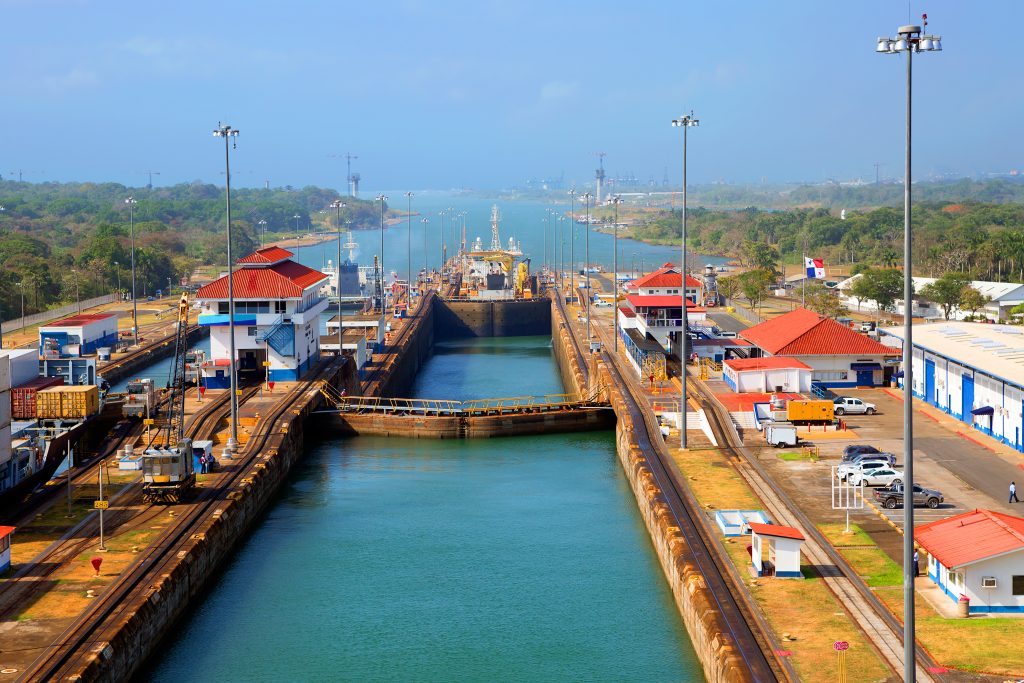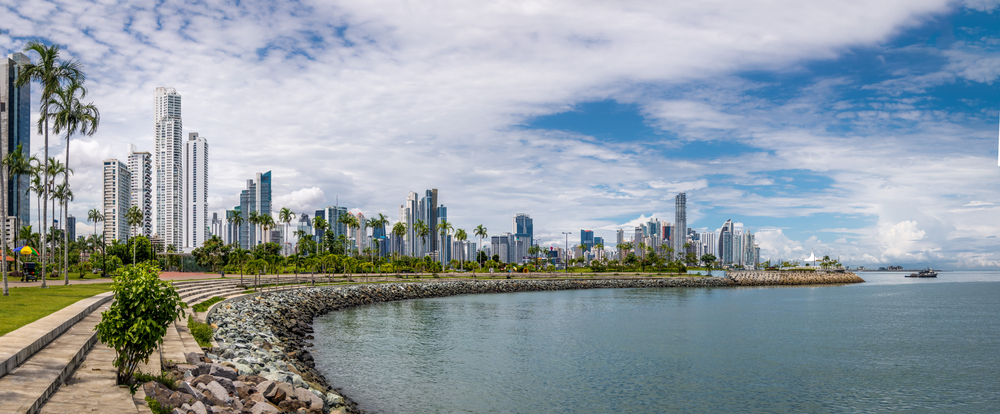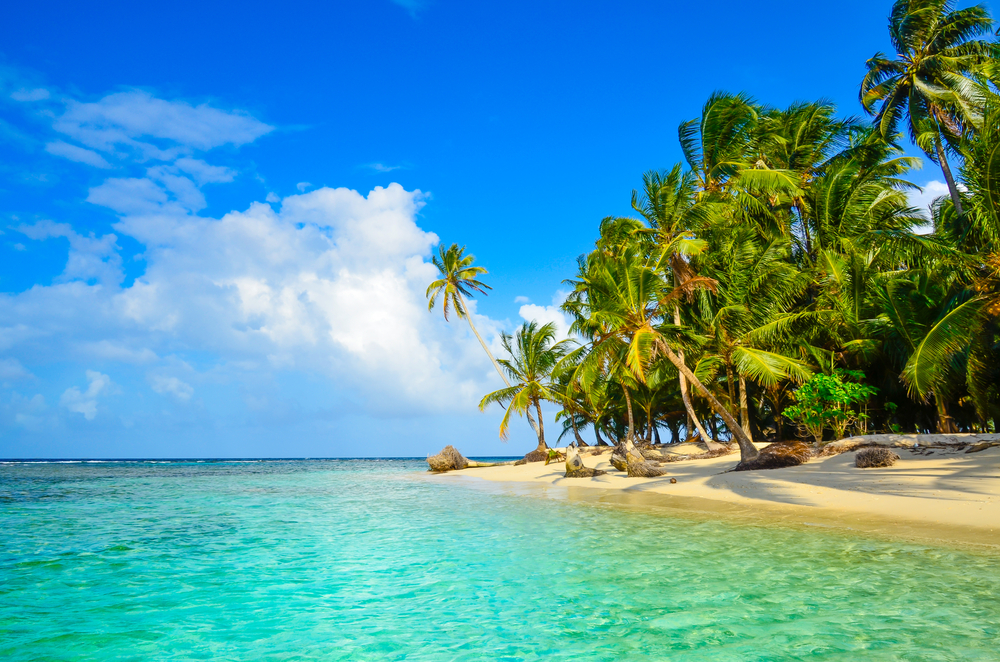The History of Panama
Renowned primarily for the tremendous feat of engineering that is the Panama Canal, Panama boasts undoubtedly one of the most fascinating histories in all of Latin America. Sitting at the crossroads not only of North and South America but also at the junction of the Pacific and Atlantic oceans, the country’s fortuitous location has been of immense strategic significance since European arrival in 1513. Pulled, prodded, invaded and influenced by all the powers that be, Panama has carved an affluent future for itself, exploiting its international allure to secure its economy. And with a stable economy, as is most often the case, political economy ensues. At least, most of the time.
One of the safest, richest and most surprising destinations in all of Latin America (did you know that Panama is home to the western hemisphere’s largest rainforest, after the Amazon?) Panama is a fierce, confident and shining example of what genial diplomacy and a great deal of economic shrewdness can achieve.

Pre-Colombian Panama
Given its diminutive size, it’s surprising to learn that Panama was home to an estimated two million indigenous inhabitants by the time the Spanish arrived in the early 1500s. The country’s human habitation dates back more than 12,000 and it is here that some of the earliest pottery ever found in the Americas was discovered. Revered for their polychrome Chiriqui pottery and intricate burial sites, early Panamanians left behind an archaeological legacy that is still being uncovered.
The Spanish Arrival
The first European to lay a claim on the Caribbean side of Panama was Rodrigo de Bastidas, who was accompanying Columbus on his second voyage to the New World. He arrived in 1501 and encountered members of the Cueva, Chocoan and Chibchan tribes. Only a year later, Columbus mapped the entire Caribbean coastline of Panama as he sailed south from present-day Costa Rica. Yet another decade would pass before the existence of another ocean to the west would be discovered. In 1513, Vasco Núñez de Balboa set off on a trek and discovered that Panama was, in fact, an isthmus, lapped on the west by the Pacific Ocean. It was at this crucial historical junction that Panama’s primary role as a priceless trade route would be immortalized forever more. The Spanish immediately deposed of the local indigenous tribes living along the route they intended to use to cart their riches from the Pacific to the Atlantic side and proceeded to murder those who opposed the new rulers; looting their riches and crafts and enslaving young and abled men for the arduous work needed. By the end of the 1600s, the Cueva culture (the most prominent at the time of Spanish arrival) had all but disappeared and their gold pillaged from cemeteries. The Camino Real (also called the Road of the Crosses) is the name given to the route carved through the isthmus by the Spanish in Panama.
Panama would continue to be a Spanish colony for the next 300 years yet as piracy in the Caribbean took hold, the use of the nation as a short-cut for transport of gold and riches weaned considerably. In 1821, Panama was joined with Ecuador, Colombia and Venezuela to form the Gran Colombia, in an alliance whose ebb and flow of success resulted in Panama claiming independence – and re-joining with a neighbouring country – several times before 1846. At this time, the US began to show
its increasing interest in the strategically placed nation. Following an accord with Colombia (with whom Panama was then incorporated) the US secured the rights to build the New World’s first transcontinental railroad in exchange for military support in case of an invasion. After the discovery of gold in present-day California, the isthmus of land that is now Panama provided an easy access point for prospectors coming from the south.

The construction of the mighty Panama Canal
Unbeknownst to many, the possibility of building a canal was first introduced back in the 16th century the know-how, back then, was simply inexistent. The French famously started building the Panama Canal in 1880 yet the harsh tropical conditions – coupled with a bevy of exotic illnesses – decimated the workforce and forced the French to abandon their plan although they still held rights to the isthmus. It was US President Roosevelt who seized the golden opportunity and, in 1902, encouraged and backed prominent local landholding families to finally push for independence of Panama from Colombia. Once this was secured (in 1903) the North Americans and French signed the Hay-Bunau-Varilla Treaty, giving the US not only the rights to complete the construction of the canal but also sovereign rights over a land that was 16km long and 80km wide around the canal. Famously or perhaps, infamously, there wasn’t a single Panamanian present when the treaty was signed.
The US took 10 years to build the Panama Canal, a progressive feat of engineering (thanks to its incredible 83-km long lock) that would forever go down in history as one of the most tremendous human achievements ever made. The Panama Canal was officially opened to traffic on August 15, 1914. You can read more about the history of the construction of the Panama Canal, its recent upgrade and the amazing wildlife that lives in the wilderness surrounding it. These 10 super cool facts will also tickle your curiosity.
Meddling & conspiracy: trouble brews
The US continued to influence and directly meddle in Panama’s politics, first backing General Manuel Noriega to take over power and then helping to depose of him once their conflicts clashed, claiming Noriega was deliberately allowing a free flow of drugs, northwards, through Panama. The invasion of Panama by the US, in 1989, was impeccably timed. Just days before the administration of the Panama Canal was to revert back to Panama (a deal had been made with Noriega’s predecessor after public protests) a new US-backed President was sworn in. By the 31st December, 1999, all land-rights and administrative rights were reverted to Panama with the US still holding the imperative of defensive military action in case its security, in the region, were to ever be threatened.
Panama Today
Over 15,000 vessels pass through the Panama Canal every year with the journey taking between 8 and 10 hours. Canal trade brings in an estimated 2.5 billion US dollars a year for Panama, with an estimated 50% of that being net profits. Banking, commerce and tourism make up the largest income earners for the country, with construction (primarily for new US military bases) giving the economy an added boost in recent years. The services sector, which includes banking, insurance and shipping services (including tax-free shipping registry) accounts for two-thirds of Panama’s GDP. Inflation has always been traditionally low here and many Panamanians enjoy a relatively high standard of living. However, given the imbalanced riches of the country (Panama is still rated as one of the world’s fastest-growing economies) the country still boasts unfavourable rates of poverty outside the major cities. According to Panama Today, 20% of the country’s population lives in poverty.
Despite its ingenious location, Panama is often seen by foreign tourists as a mere springboard between North and South America and of those who do use Panama City as a stopover, most don’t give a second thought to actually staying a few days and exploring the sights. So why don’t you? Aside the astonishing Panama Canal, the country boasts sensational snorkelling sites and gorgeous islands (like San Blas) amazing wildlife and a host of cultural and historical highlights.

For tours to Panama, stop-over sightseeing trips and the best way to incorporate a visit on a tour of Latin America, contact us today.

Talk to one of our experienced Destination Specialists to turn your Antarctic, Arctic and South American dream into a reality.
Contact us